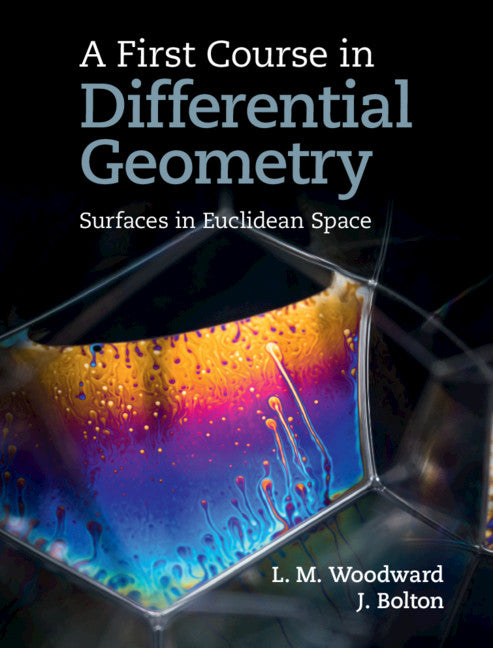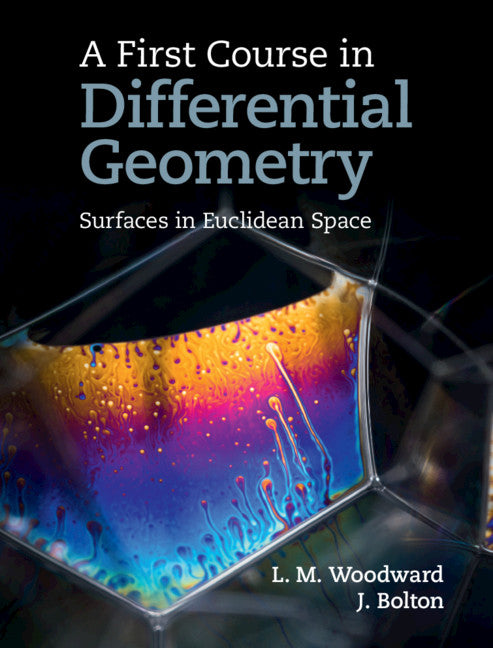Freshly Printed - allow 6 days lead
Couldn't load pickup availability
A First Course in Differential Geometry
Surfaces in Euclidean Space
With detailed explanations and numerous examples, this textbook covers the differential geometry of surfaces in Euclidean space.
Lyndon Woodward (Author), John Bolton (Author)
9781108424936, Cambridge University Press
Hardback, published 29 November 2018
272 pages, 135 b/w illus.
25.2 x 19.2 x 1.7 cm, 0.75 kg
'This is an attractive candidate as a text for an undergraduate course in classical differential geometry and should certainly be given serious consideration by any instructor teaching such a course.' Mark Hunacek, Department of Mathematics, Iowa State University
Differential geometry is the study of curved spaces using the techniques of calculus. It is a mainstay of undergraduate mathematics education and a cornerstone of modern geometry. It is also the language used by Einstein to express general relativity, and so is an essential tool for astronomers and theoretical physicists. This introductory textbook originates from a popular course given to third year students at Durham University for over twenty years, first by the late L. M. Woodward and later by John Bolton (and others). It provides a thorough introduction by focusing on the beginnings of the subject as studied by Gauss: curves and surfaces in Euclidean space. While the main topics are the classics of differential geometry - the definition and geometric meaning of Gaussian curvature, the Theorema Egregium, geodesics, and the Gauss–Bonnet Theorem - the treatment is modern and student-friendly, taking direct routes to explain, prove and apply the main results. It includes many exercises to test students' understanding of the material, and ends with a supplementary chapter on minimal surfaces that could be used as an extension towards advanced courses or as a source of student projects.
Preface
1. Curves in Rn
2. Surfaces in Rn
3. Smooth maps
4. Measuring how surfaces curve
5. The Theorema Egregium
6. Geodesic curvature and geodesics
7. The Gauss–Bonnet theorem
8. Minimal and CMC surfaces
9. Hints or answers to some exercises
Index.
Subject Areas: Topology [PBP], Differential & Riemannian geometry [PBMP], Mathematics & science [P]


